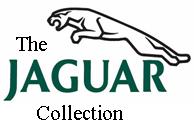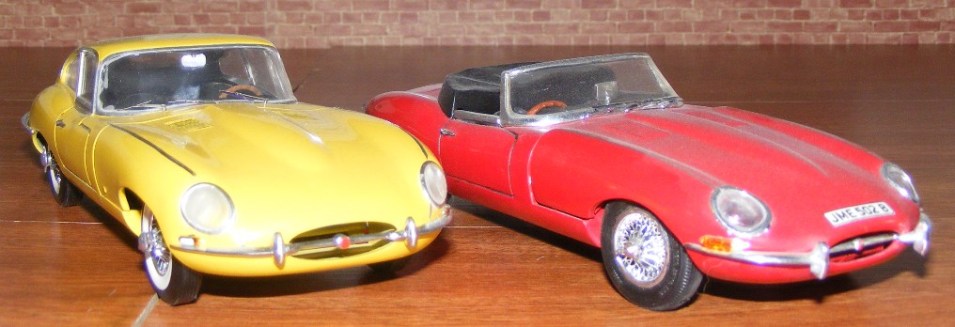
Jaguars proud boast was that they provided ‘ grace and pace’. In 1961 they backed up that boast with the perfect combination of looks and performance.
At the beginning of the 60’s Jaguar needed a quantum leap as the XK series, which had itself caused such a sensation in 1948, was fast approaching senility. Improvements such as disc brakes and a styling facelift had helped, but there was no disguising its great age.
In the experimental department chief test driver Norman Dewis was rushing around in a couple of prototype roadsters (cabriolets), as it had been intended originally to produce only an open car, but Bob Blake, a brilliant American sheet metal craftsman who worked closely with aerodynamicist, Malcolm Sayer, had other ideas. He took some welding rods and mocked up a ‘fast back’ superstructure on one of the open cars. Chairman Sir William Lyons happened to walk into the experimental shop at that moment. He looked at it in silence for some time. Finally he said “Its good, we’ll make it”.
March 16th 1961 is one of the most famous dates in Jaguar Chronology. It was then that the 31st Geneva Motor Show opened its doors to the public and there could be no doubt that the star of the event was Jaguars new 150 mph E-type sports car which was unveiled - in Coupe form.
Specification
Engine 4,235 cc (4.2 lt) straight 6-cyl.
Power 265 bhp @ 5400 rpm.
Transmission Manual 4-speed.
Chassis Monocoque cockpit.
Suspension Independent Front & Rear.
Brakes Dunlop Discs.
Top Speed 150 mph.
Acceleration 0 - 60 mph 7 seconds.
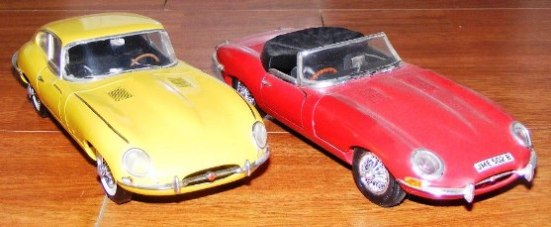



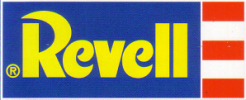
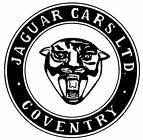
1/25th scale kits.
Built by Rod.

Here we have the original 1961 launch style coupe version, built in 2001, with a convertible alongside, built in 1998.
They are to 1/25th scale, more popular in the U.S.A. There is not much difference to 1/24th scale, unless you put the two scales of the same model side by side, so we can sit them amongst other cars in the museum display. Notice also the white wall tyres, a definite nod towards the American market. A large number were exported to the ‘States but the performance was encumbered by regulations that detuned the engine and stifled its exhaust.
Both these models were painted with Halfords car paints and have been enhanced with bare metal foil. The panel lines have been inked in to give some depth and realism.
RETURN TO -
